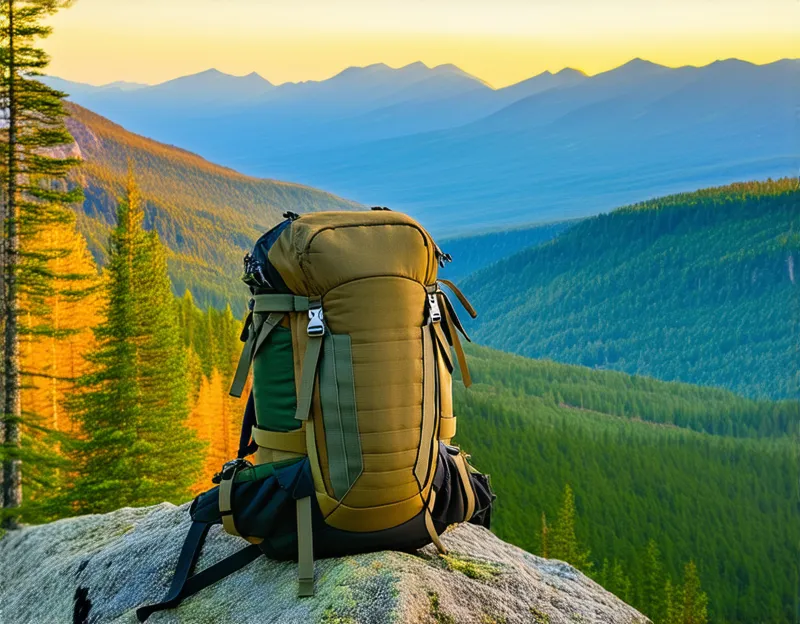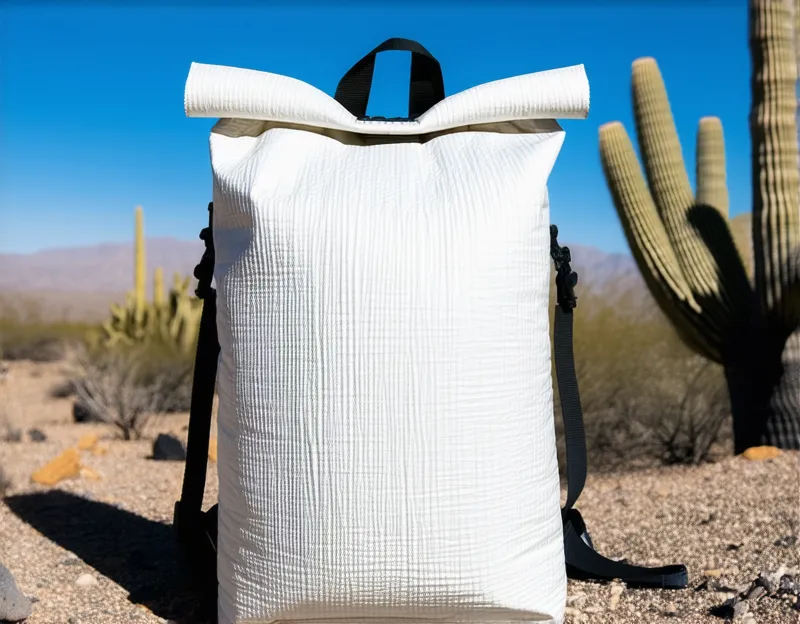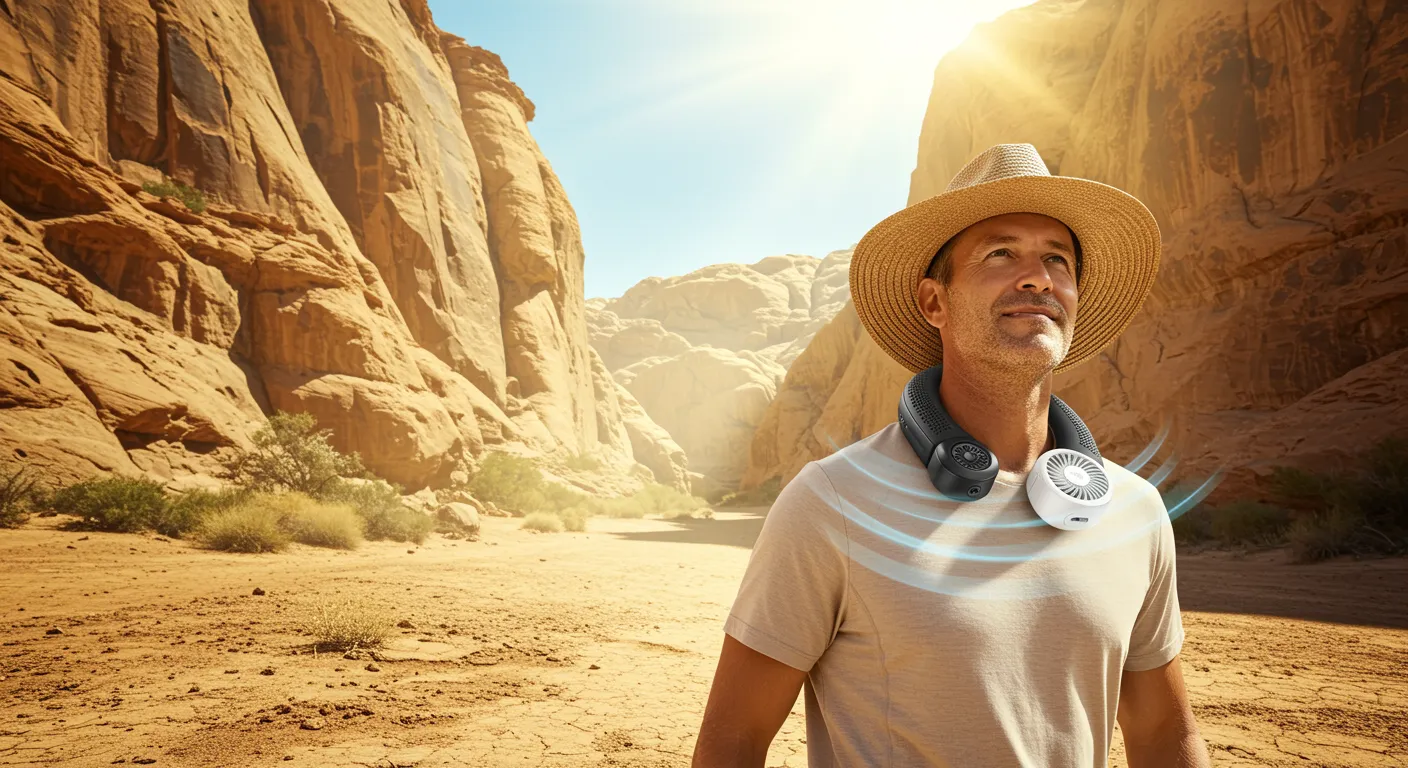
Hit the Trails: The Ultimate Guide to Finding Your Perfect Hiking Backpack (Updated for 2024)
Quick Picks: Our Top Product Recommendations
A fast overview of our top picks—scroll to see all, or jump to details below.
Hit the Trails: The Ultimate Guide to Finding Your Perfect Hiking Backpack (Updated for 2024)
The call of the wild is a powerful siren, luring us to trade concrete jungles for verdant forests, jagged peaks, and winding trails. Whether it's a leisurely day hike in a local park or a challenging multi-day trek through remote wilderness, the right hiking backpack is more than just a bag – it's your mobile basecamp, your gear locker, and a crucial partner in comfort and safety. A well-chosen backpack transforms your journey from a potential burden into a comfortable, empowering experience, allowing you to focus on the breathtaking scenery and the invigorating rhythm of the trail.

The history of hiking packs is a fascinating journey from simple canvas sacks tied with rope to sophisticated, ergonomically designed carrying systems. Early explorers and adventurers relied on rudimentary packs designed for carrying essentials, often prioritizing capacity over comfort. The mid-20th century saw the introduction of external frame packs, offering better weight distribution but often at the cost of flexibility and balance. The late 20th century marked the rise of internal frame packs, which contour more closely to the body, providing greater stability and range of motion, a design that largely dominates the market today. Modern backpacks incorporate cutting-edge materials like lightweight yet durable nylons and polyesters, advanced suspension systems that optimize airflow and reduce pressure points, and innovative features like hydration reservoirs, trekking pole attachments, and hip belt pockets. This evolution highlights a continuous quest for the perfect balance of capacity, comfort, durability, and weight – a pursuit that continues to drive innovation in the industry.

Understanding the nuances of hiking backpacks and ensuring your information is current is vital. The market for outdoor gear is constantly evolving, with new materials, technologies, and design philosophies emerging regularly. Relying on outdated information can lead to purchasing a pack that doesn't fit properly, lacks essential features for modern hiking, or simply isn't as comfortable or durable as current models. This guide is designed to cut through the noise, providing you with the most relevant and up-to-date information available in 2024 to help you choose the ideal backpack for your adventures.

The Anatomy of a Hiking Backpack: More Than Just a Bag
At its core, a hiking backpack is a vessel for carrying your essentials. However, modern hiking backpacks are complex systems designed to distribute weight efficiently and minimize strain on your body. They are generally categorized by capacity, which is measured in liters and dictates how much gear they can hold.
- Daypacks (10-30 liters): Ideal for short hikes where you only need to carry snacks, water, a light jacket, and a few personal items. They are typically frameless or have a minimal frame.
- Overnight/Weekend Packs (30-50 liters): Suitable for trips lasting one to two nights, requiring enough space for a sleeping bag, pad, a change of clothes, and more food. These often feature internal frames.
- Multi-Day Packs (50-75 liters): Designed for longer trips (3-5 days or more), accommodating bulkier sleeping systems, extra layers, and several days' worth of food. These have robust internal frames and sophisticated suspension systems.
- Expedition Packs (75+ liters): For extended trips, winter hiking requiring bulkier gear, or carrying specialized equipment. These are the largest and most robust packs available.
Beyond capacity, the key lies in the backpack's components and how they work together. The suspension system is arguably the most critical element, responsible for transferring the weight from the pack to your hips. It includes:
- Frame: Internal or external, providing structure and supporting the load. Internal frames are more common today, offering better balance and conforming to the body.
- Shoulder Straps: Padded straps that distribute some weight across the shoulders. Proper adjustment is crucial to prevent chafing and discomfort.
- Hip Belt: A padded belt that wraps around your hips, where 70-80% of the pack's weight should ultimately rest. A well-designed hip belt is essential for comfortable carrying of heavier loads.
- Load Lifter Straps: Straps connecting the top of the shoulder straps to the pack body. They pull the top of the pack closer to your body, improving balance and relieving pressure on the shoulders.
- Sternum Strap: A strap that connects the shoulder straps across your chest, helping to stabilize the load and keep the shoulder straps from sliding outwards.
Other crucial aspects include the main compartment for bulkier items, secondary pockets for organization (hip belt pockets, front stash pockets, lid pockets), hydration compatibility (sleeves and ports for water reservoirs), compression straps to cinch down the load and keep it stable, and attachment points for trekking poles, ice axes, or other gear. Understanding these components helps you evaluate a pack's suitability for your specific needs and the type of hiking you envision. Recent advancements include better ventilation systems, lightweight and tear-resistant fabrics, and more intuitive organizational features, all aimed at making your time on the trail more enjoyable.
Key Factors to Consider Before You Buy: Navigating the Options
Choosing the right hiking backpack involves a thoughtful evaluation of several factors, ensuring the pack meets your needs for comfort, functionality, and durability. Jumping into a purchase without considering these points can lead to discomfort, wasted money, and potentially even safety issues on the trail.
- Fit and Comfort: This is paramount. A poorly fitting pack can cause pain, chafing, and hot spots, turning a beautiful hike into a miserable ordeal. Backpacks are often designed with adjustable suspension systems to fit different torso lengths. Many manufacturers offer different sizes (S, M, L) based on torso length, not just your height. Some also offer women's specific fits, with contoured shoulder straps and hip belts designed for the female anatomy. When trying on a pack (ideally with some weight in it), ensure the hip belt sits comfortably on your iliac crest (hip bone), the shoulder straps conform to your shoulders without gaping, and the load lifter straps can be adjusted to pull the top of the pack in. Proper adjustability is key to fine-tuning the fit on the trail.
- Capacity and Trip Duration: As discussed earlier, the liter capacity dictates the pack's intended use. Be realistic about the longest trips you plan to take. While a larger pack can be cinched down for shorter trips, carrying an unnecessarily large and heavy pack adds extra burden. Consider the season you'll be hiking in; winter hiking requires more bulkier gear (insulated clothing, larger sleeping bag), necessitating a higher capacity.
- Weight: The weight of the pack itself contributes to your overall carrying load. Ultralight backpacks sacrifice some padding and features for minimal weight, appealing to experienced hikers prioritizing speed and efficiency. However, traditional packs with more robust suspension systems often offer greater comfort for heavier loads and novice hikers. Consider the trade-off between pack weight and comfort/features based on your experience level and typical load size. Recent innovations in materials have significantly reduced pack weight without compromising durability in many cases.
- Features and Organization: Think about how you like to access your gear. Do you prefer top loading, or do you value panel access (zippered opening on the front or side) for easier access to items lower down? Are multiple external pockets important for quick access to snacks, maps, or a camera? Do you plan to use a hydration reservoir, and does the pack have a dedicated sleeve and drinking tube port? Consider specific features like trekking pole loops, ice axe attachments, sleeping pad straps, and a brain (removable lid pocket) for versatility. Streamlined packs prioritize simplicity and weight savings, while feature-rich packs offer more organization and convenience.
- Durability and Materials: Hiking exposes your pack to abrasion, moisture, and UV rays. Look for packs made from durable materials like ripstop nylon or polyester with denier counts (a measure of fabric thickness and density) of 200D or higher. Reinforcements in high-wear areas are a plus. Water-resistant coatings can help protect your gear from light rain, but for serious wet conditions, a rain cover is essential. Consider the quality of zippers, buckles, and stitching, as these are common failure points. Recent advancements include fabrics with higher strength-to-weight ratios and improved water repellency treatments.
- Ventilation: Carrying a heavy pack can make your back sweat profusely. Many modern packs employ ventilation systems, such as suspended mesh back panels that create airflow between your back and the pack, or channels and foam padding designed to promote air circulation. Look for reviews discussing the pack's ventilation performance, especially if you hike in warm climates.
- Budget: Hiking backpacks range significantly in price, from budget-friendly options to high-end technical packs. While it's tempting to go for the cheapest option, remember that comfort and durability often come with a higher price tag. Consider the value proposition and prioritize features that are truly important to your hiking style. Investing in a well-fitting, durable pack can save you money in the long run by preventing the need for a quick replacement.
By carefully considering these factors and researching current models and reviews, you can narrow down your options and find a hiking backpack that will serve you well for countless adventures to come.
✨ Discover More You Might Like
Now, let's delve into some highly recommended hiking backpacks currently available, offering a diverse range of options for different needs and trip types, based on recent market research and analysis of user reviews.





Osprey Atmos AG 65
Buy on AmazonBeyond its innovative suspension, the Atmos AG 65 offers a robust suite of features for multi-day trips. The 65-liter capacity (also available in 50L) provides ample space for several days' worth of gear. It includes a floating top lid for expandability, a sleeping bag compartment with internal divider, and Stow-on-the-Go trekking pole attachment system allowing you to quickly stash your poles without taking off the pack. The pack is constructed from durable materials designed to withstand the rigors of the trail. Integrated organization features include side stretch mesh pockets, a front stretch mesh pocket for quickly stashing layers, and hip belt pockets for small essentials (check current model specifications as hip belt pocket size has varied slightly over iterations). An integrated rain cover is a welcome addition, providing readily available protection from unexpected showers. This is a go-to pack for serious backpackers seeking a comfortable and stable carry for longer trips. Recent reviews consistently praise its comfort on extended hikes and the effectiveness of the AntiGravity system.





Deuter Aircontact Core 65+10
Buy on AmazonWith a base capacity of 65 liters and an additional 10 liters available through the expandable collar, this pack is well-suited for multi-day and even longer excursions. The Aircontact back system, featuring foam pads with ventilation channels, is designed for efficient load transfer and stability, although it may not offer the same level of airflow as a suspended mesh system. The pack is constructed with durable fabrics and a robust frame capable of comfortably handling significant weight. Features include a separate bottom compartment, a large front zippered pocket, and multiple attachment points. If your priority is a workhorse pack built for heavy loads and offering excellent articulated movement and a fine-tuned fit, the Deuter Aircontact Core 65+10 is a top contender. Recent feedback highlights its reliability and comfort for challenging treks.





Gregory Baltoro 75
Buy on AmazonWith a generous 75-liter capacity, the Baltoro is designed for extended trips and carrying significant amounts of gear. Organization is a strong suit, with multiple access points to the main compartment (top, U-zip side access, and bottom sleeping bag compartment) making it easy to retrieve items without unpacking everything. The pack is loaded with features, including dedicated hip belt pockets, water-resistant pockets for electronics, and a cleverly integrated Sidekick backpack – a lightweight daypack that doubles as a hydration reservoir sleeve - providing versatility for summit pushes or side trips. Constructed with durable materials, the Baltoro is built to withstand rugged use. While it might be heavier than some minimalist options, for hikers prioritizing comfort, load management, and comprehensive features on longer treks, the Gregory Baltoro 75 is a consistently top-rated choice. Recent reviews often mention its ability to comfortably carry substantial weight and its useful organizational features.
✨ Discover More You Might Like





REI Co-op Traverse 60
The pack is made with durable recycled nylon and incorporates thoughtful features for organization and convenience. These include multiple external pockets, a large front stretch pocket, hip belt pockets, and dedicated sleeping bag and hydration reservoir compartments. The pack offers a top-loading design with additional front access, making it easier to get to your gear. Compression straps help to stabilize the load, and various attachment points allow for carrying trekking poles and other essential equipment. Available in both men's and women's specific fits, the Traverse is designed to accommodate a range of body types comfortably. While it may not have the absolute cutting-edge technology of premium packs, its reliable performance, durability, and accessible price point make it an excellent choice for a wide range of hikers, from beginners to experienced backpackers looking for a dependable pack without breaking the bank. Recent reviews frequently highlight its comfort, organization, and overall value proposition.





Hyperlite Mountain Gear 3400 Southwest
Buy on AmazonThe design of the Southwest is intentionally minimalist. It features a simple main roll-top compartment with external pockets on the sides and a large front pocket, all made from durable DCF. There are no excessive zippers, complicated compartments, or heavy padding, which contributes to its incredibly low weight. While the suspension system is more basic than traditional framed packs, it is effective for carrying moderate loads, especially when combined with the pack's internal aluminum stays. The inherent waterproofness of DCF means you often don't need a separate rain cover, further saving weight and hassle. This pack is best suited for hikers who have refined their gear list, possess lightweight equipment, and are comfortable with a more minimalist approach to packing and organization. The high price point is a barrier for many, but for those committed to ultralight backpacking and seeking maximum durability and weatherproofness per ounce, the Hyperlite Mountain Gear 3400 Southwest is a premier choice. Recent user feedback emphasizes its incredible lightness and toughness in challenging conditions.
Mystery Ranch Coulee 40
With a 40-liter capacity, the Coulee 40 strikes a good balance between carrying enough gear for a full day or a minimal overnight and remaining relatively compact and maneuverable on technical trails. The pack features Mystery Ranch's Futura yoke adjustable suspension system, which is known for providing a comfortable and stable carry, even with heavier loads. It allows for easy torso length adjustment to get a precise fit. Constructed with durable fabrics and robust stitching, the Coulee 40 is built to withstand rough treatment Season after season. It includes multiple pockets for organization, including hip belt pockets and a lid pocket. While not the lightest pack available, its unique access system, carrying comfort, and legendary durability make it a compelling choice for hikers who value quick access to their gear and a pack built to last. Recent reviews consistently commend the practicality of the 3-Zip and the pack's overall toughness.





Osprey Talon 22 / Tempest 20 (Women's)
Buy on AmazonWith a roughly 20-22 liter capacity, these packs are ideal for carrying essentials like water, snacks, a light jacket, and personal items on day hikes. Despite their compact size, they are feature-rich. Both include a dedicated hydration reservoir sleeve, Osprey's Stow-on-the-Go trekking pole attachment, and useful hip belt pockets for easy access to snacks or a phone. Stretch mesh pockets on the sides and front provide additional storage and organization. The lightweight yet durable construction ensures they can handle the demands of the trail. The Talon and Tempest are designed with specific fits for men and women, offering contoured shoulder straps and hip belts for improved comfort. If you're looking for a versatile, comfortable, and lightweight pack primarily for day trips and active pursuits, the Osprey Talon/Tempest series (available in various sizes up to 44/40 liters) is an excellent choice. Recent reviews praise their comfort, versatility, and durable construction for their weight class. Consult recent model specifications as capacities and slight design tweaks can occur.
Concluding Thoughts and Final Advice: Making Your Informed Choice
Choosing the right hiking backpack is a significant investment in your outdoor experiences. It's the piece of gear that will be with you every step of the way, from the trailhead to the summit and back. Approaching this decision with careful consideration of your needs, the type of hiking you do, and the features that matter most to you, backed by up-to-date information on current models, will significantly improve your chances of finding the perfect fit.
Remember to prioritize fit above all else. Even the most feature-rich and durable pack will be uncomfortable if it doesn't fit your body correctly. Take the time to measure your torso length and, if possible, try on packs with some weight in them. Don't be afraid to adjust the suspension system and load the pack with gear to simulate real-world conditions in a store or at home before committing to a purchase.
Consider the capacity that aligns with your typical trips, but also think about potential future adventures. If you plan to progress from day hikes to overnights in the future, investing in a slightly larger pack with compression straps to cinch it down for shorter trips might be a wise long-term strategy, rather than buying multiple packs.
Evaluate the features offered by different models based on your hiking style and priorities. Do you value quick access to your gear? Does ventilation on hot days matter most? Do you need a robust frame for carrying heavy loads, or are you aiming for ultralight efficiency? Weigh the pros and cons of different designs and features based on your research and the detailed information provided in this guide.
Finally, remember that reviews from other hikers are invaluable. Look for recent reviews on reputable websites and retail platforms to get a sense of how current models perform in real-world conditions, paying attention to comments on comfort, durability, ventilation, and specific features.
By combining your personal needs with the comprehensive and up-to-date information presented here, you are well-equipped to make a highly informed decision. Your perfect hiking backpack is out there, waiting to be your trusted companion on countless trails. Explore the detailed recommendations above, assess which features align best with your aspirations, and confidently make your purchase on Amazon to embark on your next unforgettable outdoor adventure. The trail is waiting!














